This article demonstrates how much material can be loaded on a Preparative Thin Layer Chromatographic Plate.
Determining how much material should be loaded requires consideration of how much adsorbent is present on the plate, how much adsorbent is used in the separation, and the resolution of the substances on Analytical TLC. The plate number and resolution of the substances in Preparative TLC should be questioned.
Essential Information
Firstly, note that the adsorbent’s density on both Analytical and Preparative TLC plates is approximately 0.52 g/cm³.
Secondly, ensure that the origin point is approximately 1 inch (2.54 cm) from the bottom of the plate. For a standard 20 cm plate, this implies that about 16.4 cm (164 mm) are involved in the chromatographic process, as illustrated below.
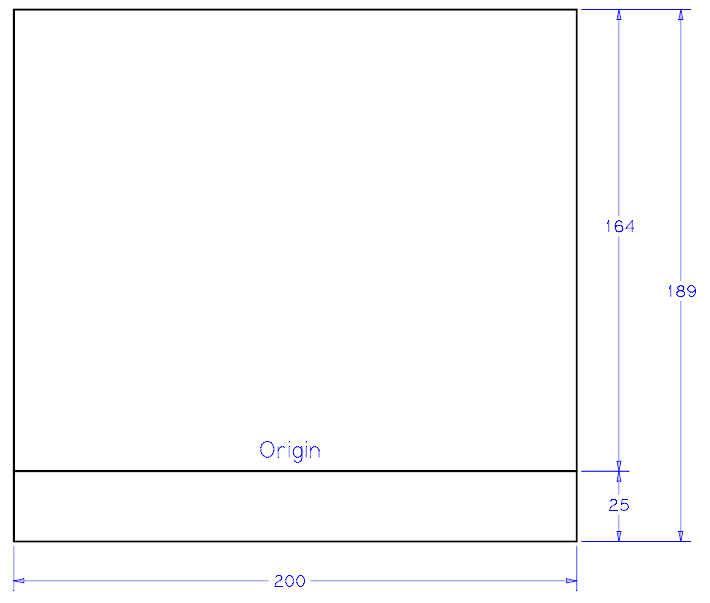
Dimensions of Standard Analytical and Preparative TLC Plates. Image Credit: Sorbent Technologies, Inc.
Amounts of Adsorbent Involved in the Separation
So, for a 20 cm x 20 cm TLC Plate — both Analytical and Preparative - the amounts of adsorbent involved in the separation are illustrated in the table below.
Source: Sorbent Technologies, Inc.
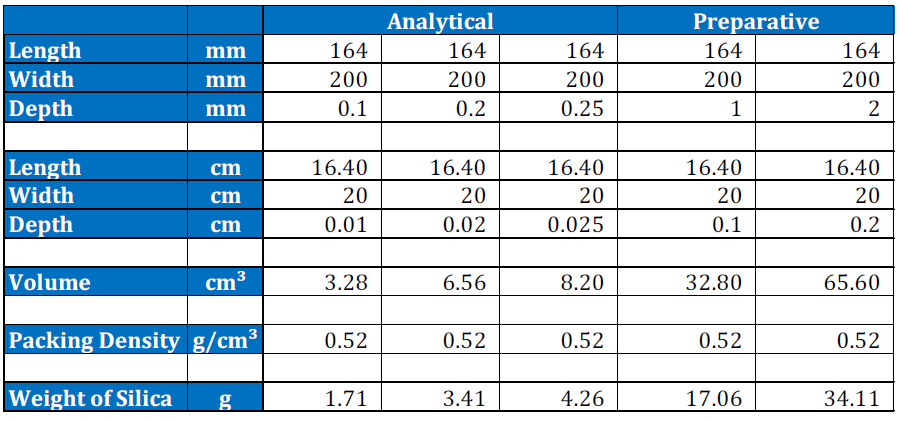
Loading on Analytical TLC Plate
Source: Sorbent Technologies, Inc.

Loading on Preparative TLC Plate
Source: Sorbent Technologies, Inc.

Mass Overload Point (MOP)
As the loading quantity increases, the separation efficiency – or plate number – decreases. When the MOP is reached, the separation efficiency diminishes very rapidly.
Analytical work consistently operates within the linear range, while preparative work is performed with the highest possible loading to purify the substance of interest, as illustrated in the figure below.
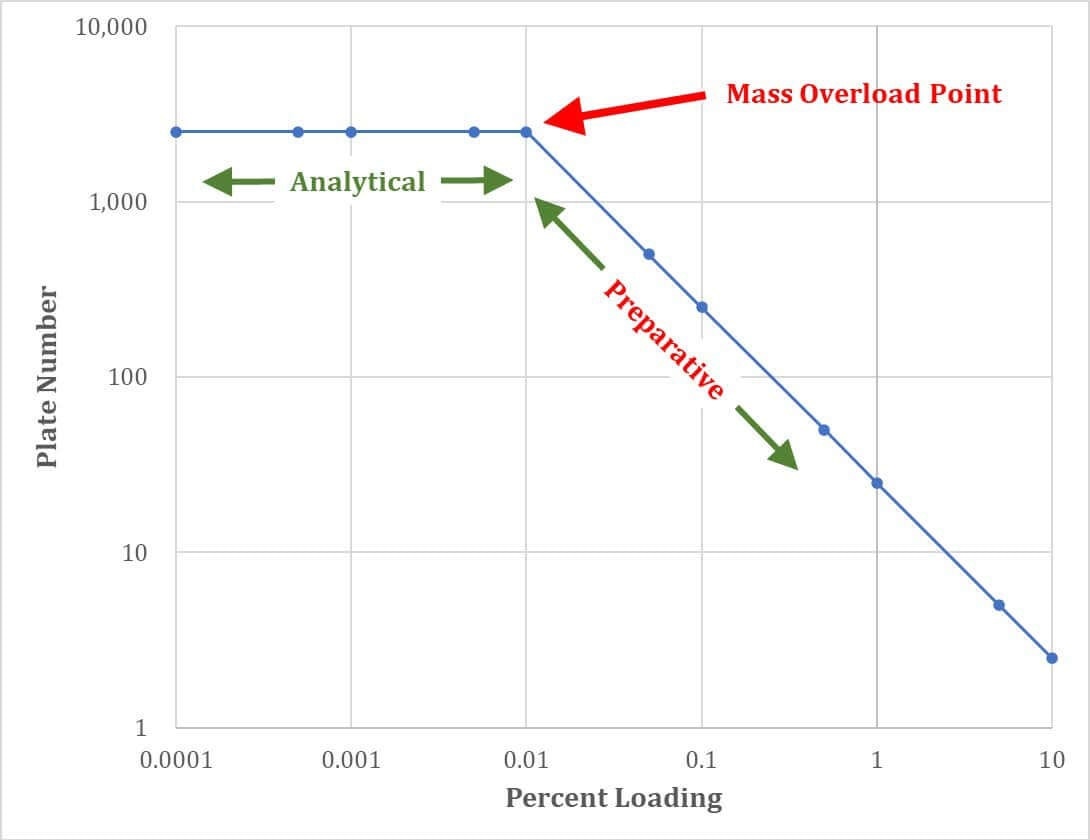
Image Credit: Sorbent Technologies, Inc.
Effect of Overloading
Beyond a certain threshold, the system becomes overloaded, rendering it unfeasible to purify the substance of interest.
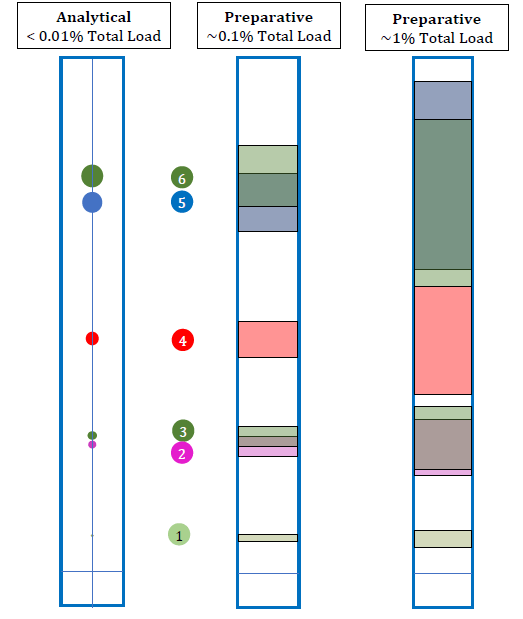
Image Credit: Sorbent Technologies, Inc.
Minimum ΔRF for Adequate Resolution?
From observing the previous visual representation and the table below, it becomes evident that the minimum ΔRf to achieve a successful separation on Preparative TLC Plates is approximately 0.1.
Source: Sorbent Technologies, Inc.
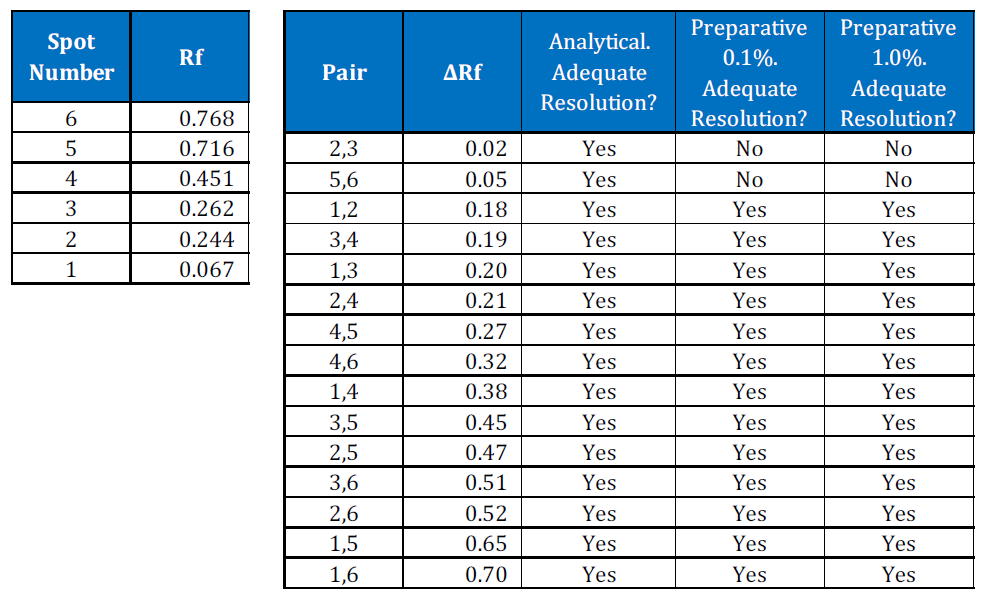

This information has been sourced, reviewed and adapted from materials provided by Sorbent Technologies, Inc.
For more information on this source, please visit Sorbent Technologies, Inc.